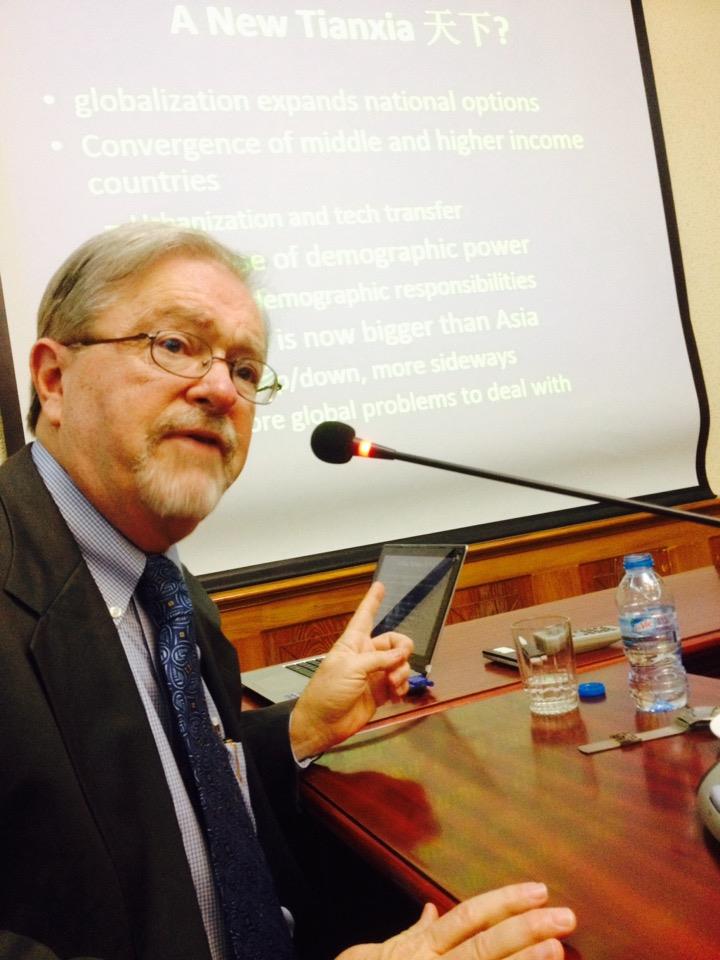
Prof. Brantly Womack's presentation took a historical and comparative perspective to analyze the different international relations cultures between the West and the East through different historical periods.
Accordingly, in the East in the past, there existed asymmetrical international relations while in the West there were competitive relations. Specifically, in the East, especially Asia, China emerged as a stable center with the largest population, resources and territory compared to other countries and territories. China's policy was to adapt and negotiate in exchange for the submission of small countries, the most typical of which was the tribute policy. On the contrary, in the West there was no stable center, but the center here was variable, changeable and flexible. In the West, kingdoms competed and fought with each other to compete for the central and dominant position. Therefore, it was difficult to have a fixed center like China, but only the Mediterranean as the intersection of trade and colonialism between countries.

Professor Brantly Womack presents (Photo: Associate Professor, Dr. Pham Quang Minh)
The above trend continued until 1500. After this milestone, modernization was born along with technology, war but also brought with it a competitive culture and a state of destruction, most clearly shown in the 20th century with the two World Wars I and II. However, the competitive trend was somewhat reduced during the Cold War because the two superpowers, the US and the Soviet Union, were afraid of a war with great losses. At the same time, in Asia there was a strong resistance to colonialism, leading to the movement for independence and decolonization of smaller countries. After the Cold War, in the West the United States emerged as the dominant superpower, while in Asia an asymmetric trend was formed with the superiority of China.
By the 21st century, the trend of competition and domination has been further weakened as globalization has taken place and promoted cooperation. The economic crisis of 2008 has caused the United States to lose its dominant position, while China has emerged as the most influential country in Asia with an overwhelming population and a wider sphere of influence. But China cannot impose its dominance on other countries but will maintain a stable asymmetric order. At the same time, it will compete with the United States not through war or confrontation as in the Cold War, but through peaceful, cautious competition. The two countries will be the center of the world in the future but will not control or dominate the world.
During the presentation, many questions were raised to Professor Brantly Womack such as China's internal threats, the future world order, Vietnam's response to China-US relations, the role of India and Japan in Asia's asymmetrical relations...
Prof. Brantly Womack is a lecturer in International Relations at the University of Virginia, an expert on China and Vietnam. He is the author of the famous book “China-Vietnam: Asymmetric Politics” which describes in great detail the China-Vietnam relationship in the new era.
Author:Tran Minh
Newer news
Older news